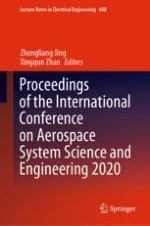2021 | OriginalPaper | Buchkapitel
Effect of Aspect Ratio on Wake Patterns and Thrust Characteristics of Pitching Wings
verfasst von : Dechuan Ma, Zhan Qiu, Gaohua Li, Fuxin Wang
Erschienen in: Proceedings of the International Conference on Aerospace System Science and Engineering 2020
Verlag: Springer Singapore
Aktivieren Sie unsere intelligente Suche, um passende Fachinhalte oder Patente zu finden.
Wählen Sie Textabschnitte aus um mit Künstlicher Intelligenz passenden Patente zu finden. powered by
Markieren Sie Textabschnitte, um KI-gestützt weitere passende Inhalte zu finden. powered by
